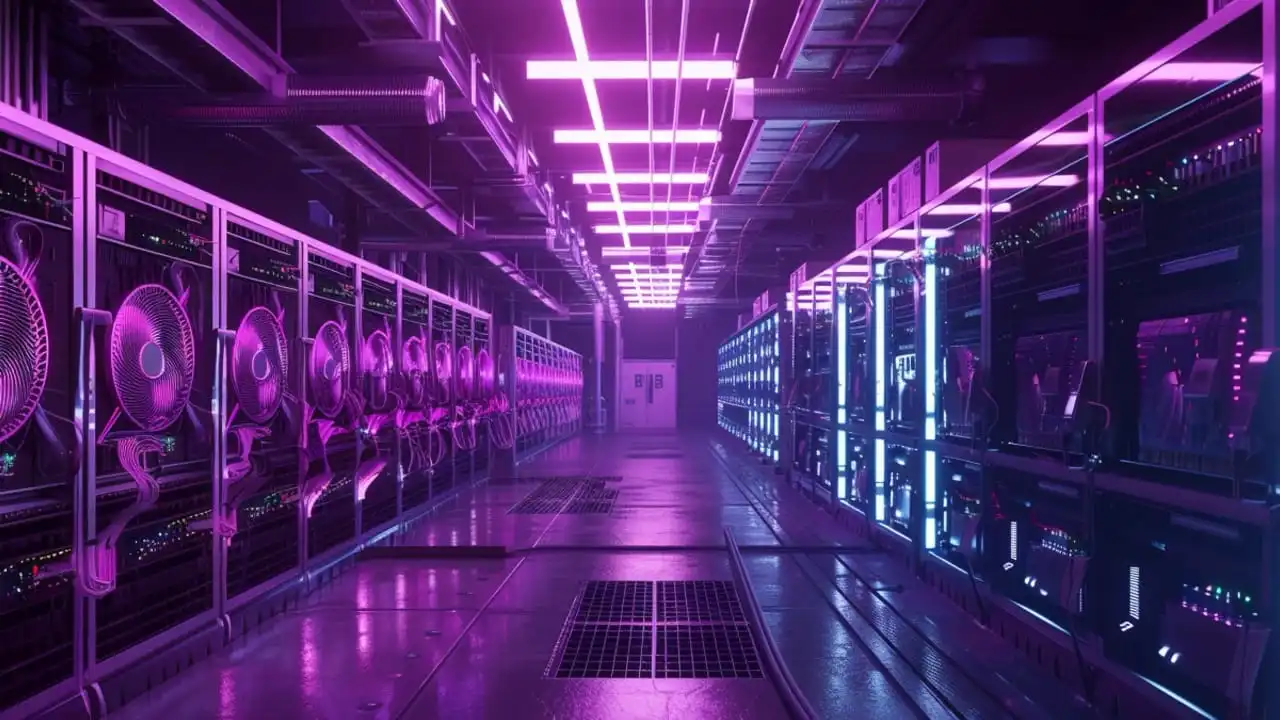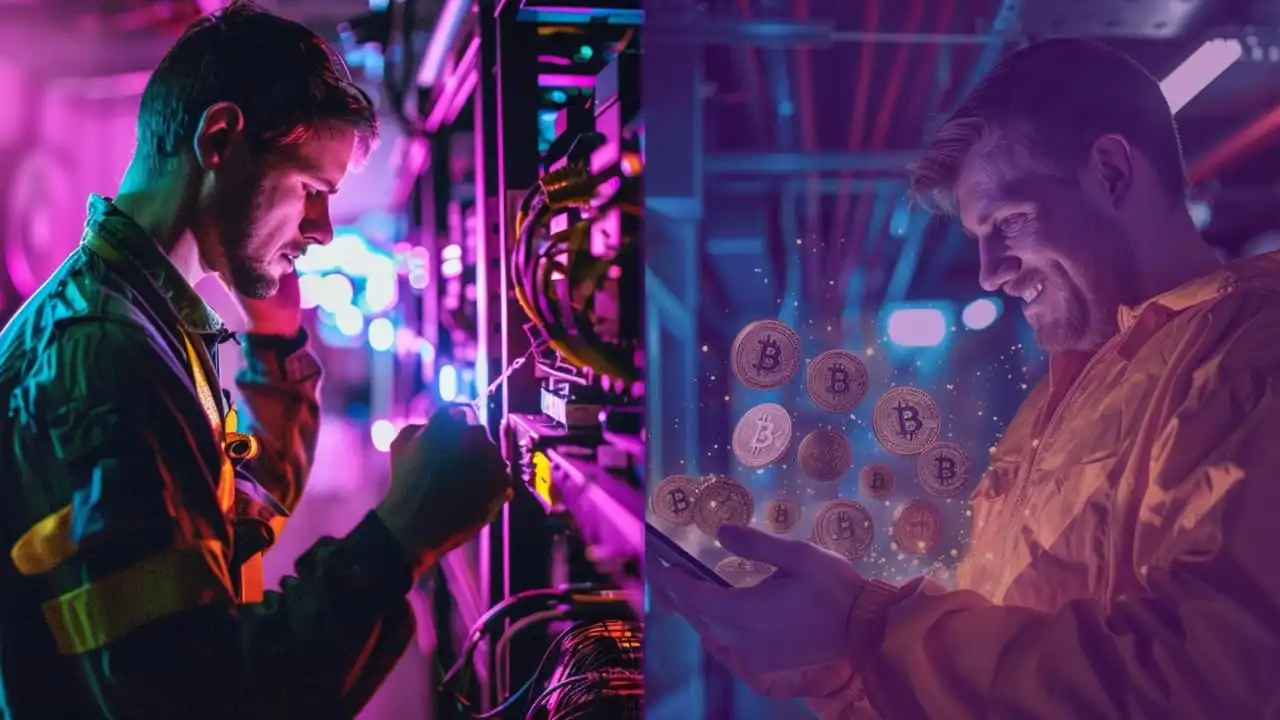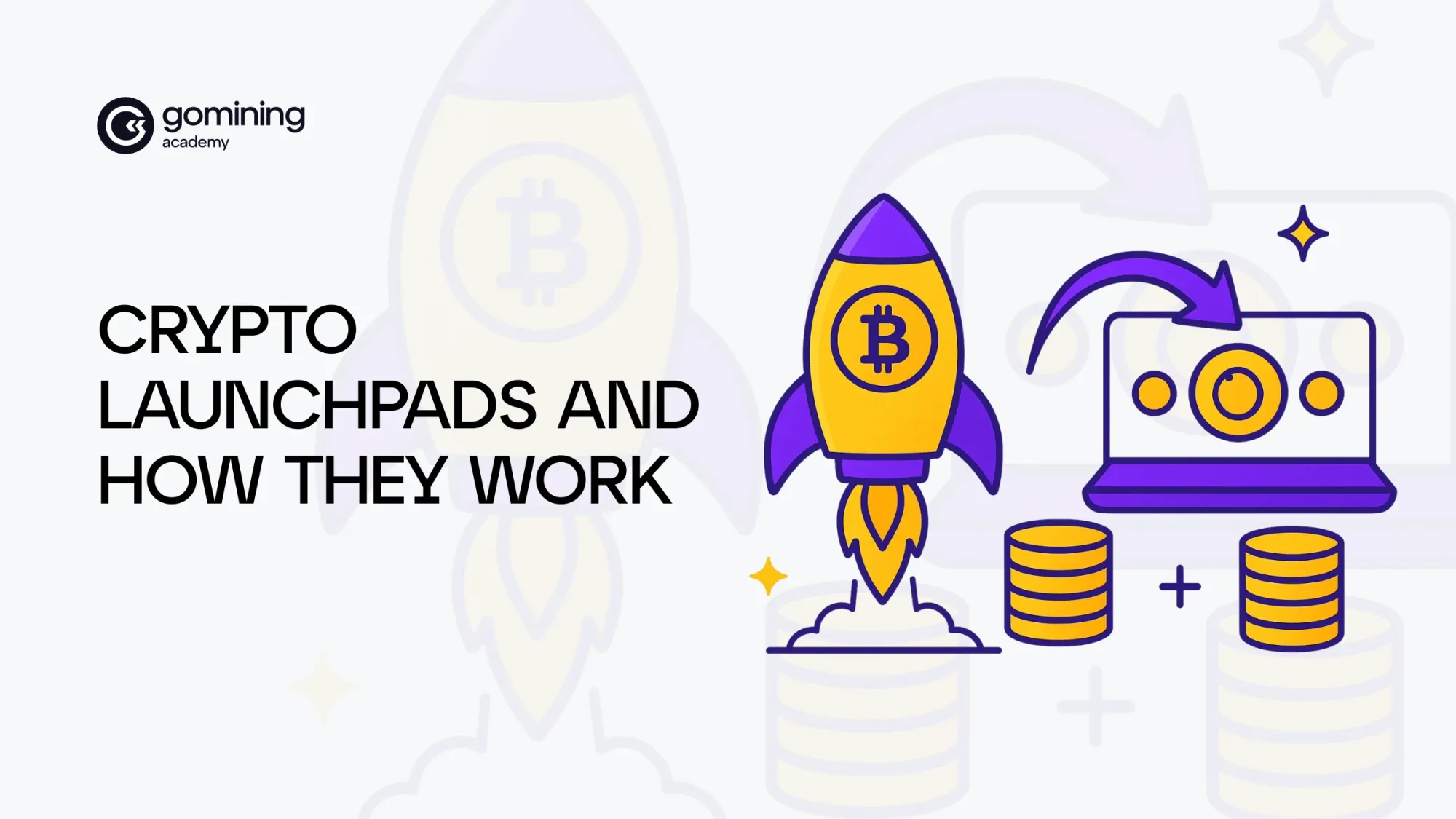How to Set Up and Maintain a Crypto Mining Farm

If you’ve ever come across Bitcoin or Ethereum and thought, “How does this all work?”, the answer usually involves a lot of computers and a fair bit of electricity. It’s called mining. But not the kind with pickaxes and helmets—this one is digital. Think of mining, or “crypto extraction” as the process that keeps cryptocurrencies running. It verifies transactions, adds new blocks to the blockchain, and, in return, rewards those who contribute their computing power.
Now, take that idea and multiply it. Add racks of machines, complex cooling systems, and round-the-clock operations, and you’ve got what’s known as a crypto mining farm. It’s a physical space filled with crypto harvesting hardware, designed to extract as much cryptocurrency as possible from the network.

Getting started might feel like trying to launch a rocket. But it doesn't have to be complicated. With a bit of planning, the right equipment, and a good grasp of the process, setting up a mining farm becomes less about taking a giant leap—and more about following a steady, practical path.
In this guide, we’ll cover everything you need to know. From choosing between ASIC miners and GPU mining rigs, to finding the right cooling solutions for mining, and managing your power use effectively. We'll also go into the details of crypto mining software, explain pool mining and solo mining, and give you clear steps on mining farm maintenance, scaling up, security, and understanding your costs.
This guide is built to be readable, no matter your technical background. By the end, you’ll understand how to see a mining project through—from a single rig to a full-blown crypto mining farm. Ready to get started?
Planning and Preparation
Research: Understanding the Requirements of Different Cryptocurrencies
Not all cryptocurrencies are mined the same way. Some use different algorithms, need different hardware, and offer different returns. So before you plug in a single machine, take a moment to ask: what exactly am I going to mine?

- Bitcoin, for example, uses an algorithm called SHA-256, which can only be mined profitably using ASIC miners. These are powerful machines made specifically for one job.
- Ethereum Classic, on the other hand, runs on a different algorithm (Etchash), which still works well with GPU mining rigs.
Ok, so, what’s the difference?
- ASIC miners are custom-built for a single purpose. They’re efficient, powerful, and typically used for coins like Bitcoin or Litecoin. But they’re not flexible—you can’t switch them to another coin easily.
- GPU mining rigs are built using general-purpose graphics cards. They’re slower than ASICs but can be reconfigured to mine many different coins. If you’re looking to explore or switch between coins depending on trends, this route gives you more control.
You’ll also want to look into:
- Difficulty: This changes over time and determines how hard it is to find a block.
- Block rewards: This is the amount of cryptocurrency you receive when your system successfully mines a block.
- Energy consumption: Some cryptocurrencies cost more in power than they give back in coins. Understanding this balance is key to finding the right setup.
- System requirements: Each coin may need specific hardware, software, or memory specs. Double-check before buying any equipment.
Taking the time to understand these differences helps you choose the best path forward and avoid costly mistakes.
Choosing the Right Location for Your Mining Farm
The location of your crypto farm plays a massive role in your overall success. It’s not just about where to plug things in—it impacts everything from power management in mining to cooling solutions, your operational costs, and even local support.
Here’s what you need to consider:
- Stable and affordable electricity: Extracting crypto uses a lot of power, so energy rates can make or break your operation. Try to find a location where industrial energy rates are low and reliable.
- Cooling and ventilation: Miners generate heat—lots of it. Natural airflow is a huge plus. If you're in a cooler climate, that’s even better. Some setups are in old warehouses, while others use insulated containers with built-in fans to keep equipment from overheating.
- Space and layout: You’ll need enough room to house your equipment safely and manage airflow. Avoid cramped basements or attics. If you’re building a bigger operation, plan for clean cable routes and easy maintenance access.
- Security: Physical security is essential. Locked doors, fenced perimeters, and even basic alarm systems can help prevent theft or tampering.
Some large-scale miners even set up near hydroelectric plants or wind farms to lower their energy bill and take advantage of renewable sources.
Legal Considerations and Local Regulations
Before you switch anything on, it’s essential to make sure you’re allowed to do so. Cryptocurrency extraction is legal in most places, but rules vary widely by country, and sometimes even by city.
Things to look into:
- Permits: Depending on your location, you might need permits for electrical work, business licensing, or industrial equipment.
- Power usage restrictions: Local grids may limit how much energy you’re allowed to draw, especially during peak hours.
- Tax responsibilities: Mined cryptocurrency is often treated as income. Some places even have specific tax rules.
- Environmental impact rules: Noise, heat, and energy use can draw attention from regulators. Stay ahead by checking the laws and working within them.
Sorting these out early will help your operations stay smooth and avoid any future fines or shutdowns.
In short, think of this phase as building your foundation. The more solid and informed your start, the more resilient and efficient your farm will be down the line.
Choosing the Right Mining Hardware
ASIC Miners vs. GPU Mining Rigs
Your hardware is the heart of your crypto mining farm. And choosing the right one depends on what coin you want to mine, how much you’re willing to spend, and how much flexibility you need.
Let’s break it down:
- ASIC miners (Application-Specific Integrated Circuits) are specialised machines built to mine a specific algorithm. That means they’re incredibly efficient at one task—like extracting Bitcoin. Popular models like Bitmain’s Antminer series are fast, powerful, and built to run non-stop. They’re a great fit for anyone focused solely on a coin like Bitcoin, where efficiency and raw hash power matter most.
- GPU mining rigs use graphics cards that you’d usually find in a gaming PC. They’re less powerful compared to ASICs, but they have a big upside: flexibility. You can mine a range of coins by switching up your software. This makes GPU rigs a good option if you want to react to changing market conditions or try different cryptocurrencies.
To keep things simple:
- Want to mine one coin long-term? ASIC miners are the way to go.
- Want to test, switch, and adapt? GPU mining rigs give you options.
Best Mining Hardware for Profitability (Based on Current Market Trends)
Not all hardware gives the same return. Some might be cheaper up front but cost more to run. Others are more expensive but make up for it with better performance and lower energy costs.
As of now, here are two strong performers:
- Bitmain Antminer S19 Pro – Designed for Bitcoin, this ASIC miner is known for delivering high hash rates while keeping power consumption reasonable. It's one of the most reliable options if you're building a Bitcoin-focused farm.
- NVIDIA RTX 4090 – This is one of the best GPUs for mining altcoins. It’s expensive, but it performs well across a range of coins. Ideal if you’re going the GPU route and want long-term value.
Before buying any hardware, it’s smart to use an online profitability calculator. These tools help you estimate how much you can earn based on current market conditions, your local electricity rate, and the coin you plan to mine.
This is why GoMining features an online calculator to give a clear idea of the profitability of each digital miner.
Evaluating Power Consumption and Efficiency
No matter what hardware you choose, it’s going to be running 24/7. That means power management in mining isn’t just a side consideration—it’s one of the biggest parts of keeping your operation sustainable.
Look out for these key factors:
- Power-to-hashrate ratio: This tells you how much energy your device uses to deliver a certain level of crypto extraction performance. Lower is better.
- Smart features: Some devices let you scale power usage during off-peak hours or auto-adjust to run cooler, which can extend their lifespan.
- Electricity costs: Check your local rate per kWh. High rates can quickly eat into your profits.
Some miners install smart meters or use dedicated power tracking software to monitor usage closely. The more control you have, the easier it is to plan, budget, and keep your operations running smoothly.
Setting Up the Mining Farm
Basic Setup Steps: Hardware Installation, Power Setup, and Cooling Solutions
Setting up a farm starts with installing and connecting your ASIC miners or GPU rigs, wiring them to a stable power source with sufficient capacity, and installing cooling solutions such as industrial fans or air conditioning. Additional essentials include surge protectors, backup systems, and solid racks to keep the setup organized.
Organizing the Space for Optimal Airflow and Safety
Ensure equipment is spaced out to allow proper airflow, avoid stacking units directly on top of each other, and keep cables neat with easy access to circuit breakers. Safety isn’t just about preventing overheating—it’s also about protecting your set up.
Software Setup for Mining
Selecting the Right Mining Software for Your Hardware
The best software depends on your hardware: CGMiner and BFGMiner are suitable for ASIC miners, while NiceHash and PhoenixMiner are popular for GPU setups.
Pool Mining vs. Solo Mining: Pros and Cons of Each
Pool mining allows you to share rewards with others, offering more stable and predictable income. Solo mining gives you the full block reward, but it's rarely successful without massive hashpower. Beginners typically start with pools for consistent, smaller payouts.
Setting Up Mining Software and Connecting to the Mining PoolTo get started, install your chosen software, configure your wallet address, choose a mining pool, and run your mining client to begin operations.
Power Management and Cooling
Power Supply Considerations and CostUse industrial-grade PDUs and install circuit breakers to protect your setup. Monitor your electricity cost per kilowatt-hour to estimate your monthly operating expenses.
Cooling Systems: Fans, Air Conditioning, Liquid Cooling
Fans are cost-effective but less efficient in warm climates. Air conditioning works well in enclosed areas but increases energy consumption. Liquid cooling is highly efficient for large setups but comes with higher upfront costs.
Managing Electricity Costs and Maintaining Efficiency
To optimize power use, stagger machine start-ups with smart timers, install meters to track individual system consumption, and consider renewable energy options where available.
Maintenance and Monitoring
Software Updates and Miner Management
Keep your software and firmware up to date, restart devices periodically to clear memory, and use management tools like Hive OS or Awesome Miner to monitor your setup.
Using Monitoring Tools for Performance Tracking
Track hashrate, temperature, and system alerts to detect issues early. Use mobile apps or remote dashboards to stay updated in real time, even when you're offsite.
Scaling Up Your Mining Farm
Adding More Hardware and Expanding the Farm
As profits grow, consider adding more rigs, upgrading power and cooling systems, and improving organisation with better racking solutions.
Handling Increasing Power Demands
Work with a licensed electrician to upgrade your power infrastructure, add dedicated circuits, and plan your layout to avoid overloads.
Network Scaling for Larger Operations
Use commercial-grade routers and switches, set up a dedicated Local Area Network (LAN) for traffic, and install remote reboot systems for easier management.
Profitability and Financial Considerations
Estimating Mining Profitability and ROI
Use tools like WhatToMine to estimate returns, taking into account hardware costs, energy consumption, and current crypto market trends.
Managing Costs and Maximising Profits
Buy hardware during market dips, switch coins based on profitability, and continuously monitor performance to maintain optimal efficiency.
Keeping Track of Mining Earnings and Taxes
Use tracking tools or spreadsheets to log mined coins, currency conversions, and block rewards. Consult a tax advisor to stay compliant with local crypto tax regulations.
Security of Your Mining Farm
Physical Security: Protecting Hardware and Equipment from Theft or Damage
Install CCTV and motion detectors, secure all entry points, and insure your equipment when possible.
Cybersecurity: Protecting Your Mining Farm from Hacks and Malware
Keep firmware updated, use secure passwords and firewalls, and avoid suspicious links or mining pools.
Backup Strategies and Disaster Recovery
Regularly back up mining configurations and wallet data, keep spare parts on hand, and consider cloud storage for critical information.
Want an Easier Way to Earn Bitcoin? Try GoMining
Not everyone has the time, space, or budget to run their own mining operation. That’s where GoMining comes in. Instead of building a mining farm from scratch, you can purchase a Digital Miner—a virtual miner backed by real-world hashpower. Each Digital Miner earns daily Bitcoin based on its performance, and everything is handled for you behind the scenes.

You can:
- Track your earnings and efficiency in a clean, user-friendly dashboard
- Upgrade your miner or adjust energy efficiency to increase profits
- Skip the noise, heat, wiring, and maintenance altogether
It’s a way to mine smarter—no server racks or sleepless nights required. Start earning with GoMining today.
The Future of Crypto Mining Farms
The Role of Mining Farms in the Future of Cryptocurrency
As long as cryptocurrencies like Bitcoin and others rely on proof-of-work mechanisms, farms will continue to be the backbone of blockchain infrastructure. They aren’t just optional—they’re essential. Farms process transactions, validate blocks, and keep networks decentralised and secure from attacks.
But the game is changing. Crypto extraction is no longer just about plugging in a few machines—it’s a competitive, high-stakes industry.With rising difficulty and more players in the space, the farms that succeed will be those using professional-grade setups:
- Advanced cooling systems to prevent overheating
- Smart power management to cut costs
- Performance monitoring software for real-time optimisation
As demand grows, scaling up mining farms will become key to staying competitive. Operators will need to fork out on additional infrastructure, network bandwidth, and efficient layouts to expand without sacrificing stability.
At the same time, mining farm security, both physical and digital, is becoming more important than ever. With valuable hardware and Bitcoin rewards at stake, farms must protect themselves from theft, hacks, and operational failures.
The shift is clear: crypto extraction is becoming more industrial, more strategic, and more efficient.
Environmental Concerns and Sustainable Mining Solutions
The energy demands of crypto extraction are no secret—and they’ve sparked global debate. In response, the industry is actively shifting towards greener, more responsible practices.
Innovative operators around the world are adopting sustainability strategies such as:
- Switching to renewable energy like solar, wind, or hydroelectric power to cut emissions
- Locating farms in cooler climates to reduce reliance on energy-intensive air conditioning
- Recycling excess heat by channeling it into greenhouses, industrial buildings, or local heating systems
There’s also growing interest in carbon credits and sustainable crypto generation certifications, helping miners prove their operations are eco-friendly.
Maintaining cryptocurrency mining profitability in the long term will increasingly depend on balancing performance with sustainability. Operators who optimise their energy use and adopt efficient hardware will be better positioned to manage costs and weather market fluctuations.
Smart tools for monitoring mining farms are also expected to become standard. These tools help track everything from temperature to hashrate to uptime—allowing operators to catch problems early and optimize performance without being on-site 24/7.
The future of crypto extraction is not just about producing more hashpower—it’s about doing it cleaner, smarter, and more responsibly. Farms that embrace this shift early are more likely to attract partners, survive regulation changes, and earn long-term rewards.
Conclusion
Setting up a crypto farm can feel like a big step—and it is—but it’s also achievable with careful planning and the right tools. From picking between ASIC and GPU miners to configuring software, installing cooling, and tracking performance, every piece plays a part in building a profitable setup.
Stay consistent with your maintenance, manage your energy usage wisely, and don’t forget to monitor performance regularly. You’ll be better positioned to maximise long-term returns—and when you’re ready to expand, scaling up becomes a natural next step.
And if you’d prefer a simpler route? Platforms like GoMining let you get started with real hashpower, minus the heavy lifting.
Welcome to the future of digital mining.


